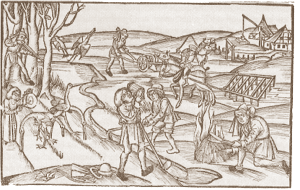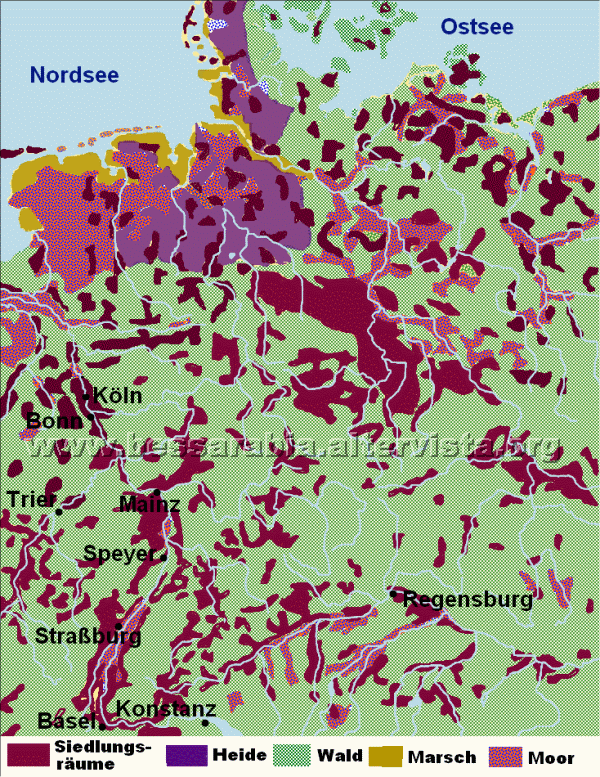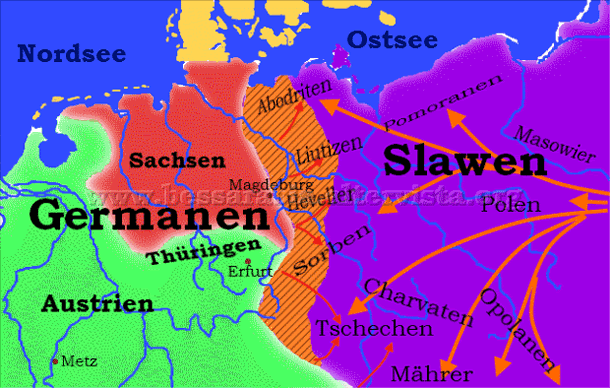The German eastward expansion (Ostsiedlung)1
(Page 1 of 4)

work in the fields
From the early Middle Ages, the population grew steadily from a stagnation in the 10th century to the 14th Century.
As a consequence rural settlements were enlarged from hamlets to villages; many new settlements were founded, developed by land reclamation and deforestation.
The focus of early medieval deforestation was in the northwest of the territory of modern Germany, where moors were drained and dams were built, as well as in the forests of the Vosges, the Black Forest, the Harz and the Thüringen Forest.

The medieval German eastward settlement was not always associated with the peaceful clearing of uncultivated land, on behalf of resident rulers of the territories in the east, but as a result of the migration boundaries between ethnic boundaries of both Germanic (later German) and Slavic tribes in Central Europe and the Baltic tribes on the Baltic Sea.

Border between Teutons (left) and Slavs (right)
1 Thanks to S. Winkler for help with the English translation of this page



